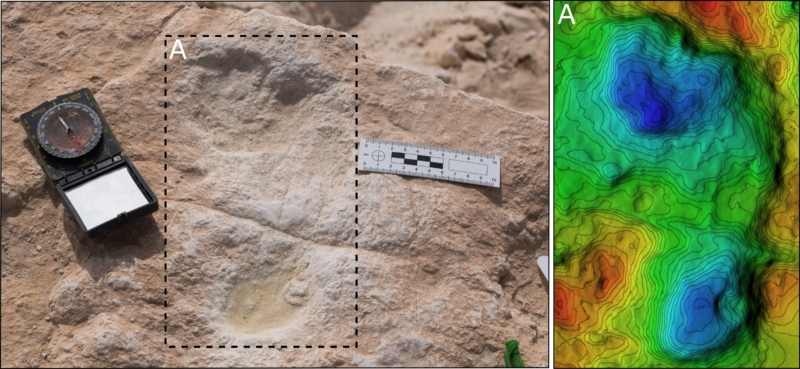Humans reached Saudi Arabia at least 120,000 years ago

Enlarge (credit: Stewart et al. 2020)
About 120,000 years ago, two or three people walked along the shore of a shallow lake in what is now northern Saudi Arabia. They left behind at least seven footprints in the mud, and today those tracks are the oldest known evidence of our species' presence in Arabia.
A Pleistocene walk by the lakeImagine that you're a hunter-gatherer about 120,000 years ago, and you're walking out of eastern Africa into Eurasia. Paleoanthropologists are still debating exactly why you've decided to do such a thing, and you almost certainly don't have a destination in mind, but for now we'll take it for granted that you just want to take a really, really long walk. Almost inevitably, you'll come to the Levant, on the eastern end of the Mediterranean. From that important geographical crossroads, you've got some options: you could head north through Syria and Turkey, then veer east into Asia or west into Europe. You could also strike out east, across the northern end of the Arabian Peninsula.
That was a better option then than it sounds now. Off and on during the Pleistocene, the Arabian Peninsula had a wetter climate than it does today. Evidence from ancient sediments, pollen, and animal fossils all suggest that today's deserts were once grasslands and woods, crossed by rivers and dotted with lakes like the one at Alathar in the western Nefud Desert.
Read 11 remaining paragraphs | Comments